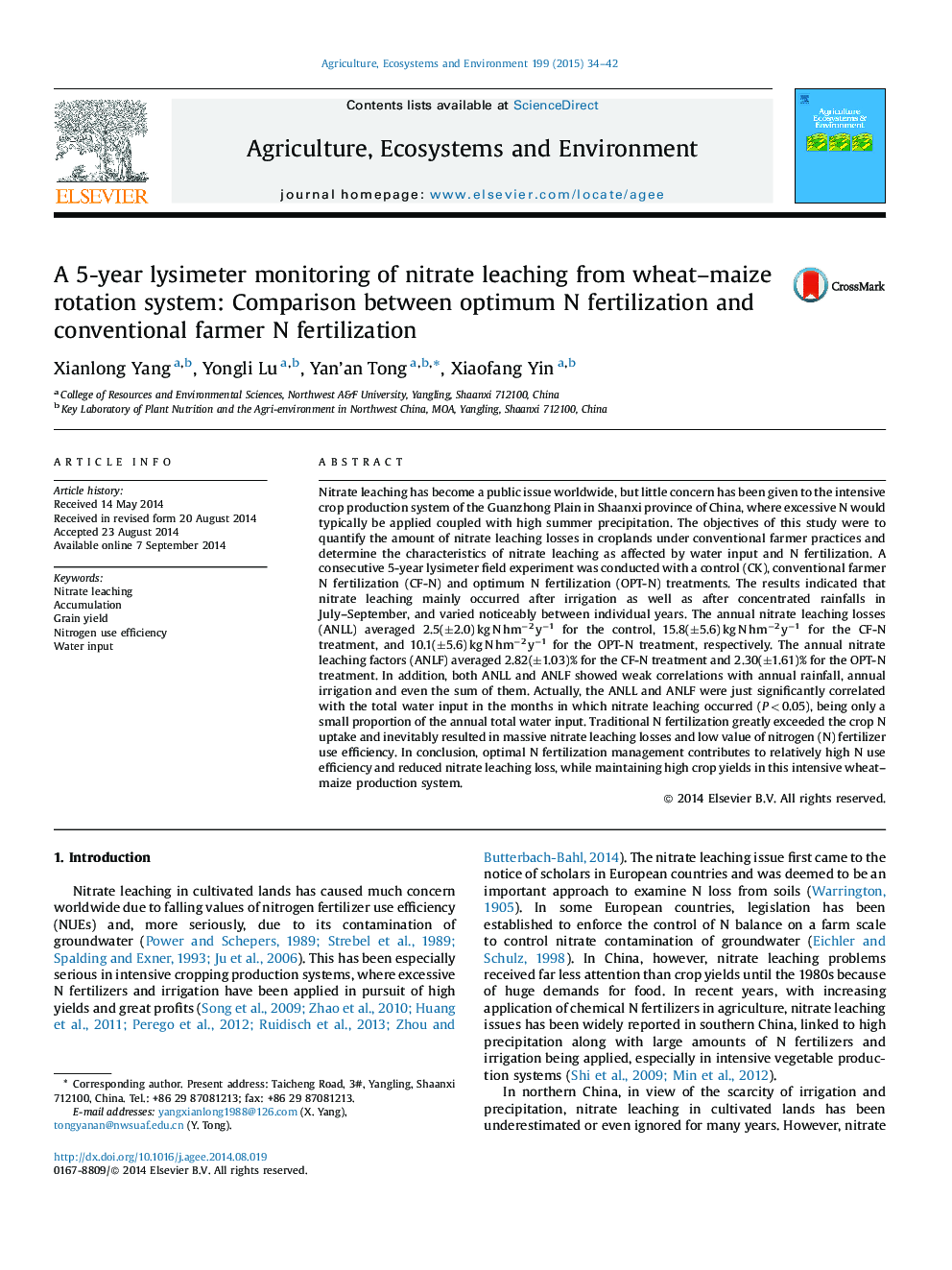| کد مقاله | کد نشریه | سال انتشار | مقاله انگلیسی | نسخه تمام متن |
|---|---|---|---|---|
| 2413841 | 1552053 | 2015 | 9 صفحه PDF | دانلود رایگان |

• Nitrate leaching occurred after irrigation as well as after concentrated rainfalls in summer.
• Annual nitrate leaching losses and leaching factors showed noticeable variations between individual years.
• Conventional farmer N managements increased annual nitrate leaching losses and leaching factors.
• Annual nitrate leaching losses did not correlate significantly with the annual water input.
• Optimal N managements reduced ANLL by 36.1% without any yield loss.
Nitrate leaching has become a public issue worldwide, but little concern has been given to the intensive crop production system of the Guanzhong Plain in Shaanxi province of China, where excessive N would typically be applied coupled with high summer precipitation. The objectives of this study were to quantify the amount of nitrate leaching losses in croplands under conventional farmer practices and determine the characteristics of nitrate leaching as affected by water input and N fertilization. A consecutive 5-year lysimeter field experiment was conducted with a control (CK), conventional farmer N fertilization (CF-N) and optimum N fertilization (OPT-N) treatments. The results indicated that nitrate leaching mainly occurred after irrigation as well as after concentrated rainfalls in July–September, and varied noticeably between individual years. The annual nitrate leaching losses (ANLL) averaged 2.5(±2.0) kg N hm−2 y−1 for the control, 15.8(±5.6) kg N hm−2 y−1 for the CF-N treatment, and 10.1(±5.6) kg N hm−2 y−1 for the OPT-N treatment, respectively. The annual nitrate leaching factors (ANLF) averaged 2.82(±1.03)% for the CF-N treatment and 2.30(±1.61)% for the OPT-N treatment. In addition, both ANLL and ANLF showed weak correlations with annual rainfall, annual irrigation and even the sum of them. Actually, the ANLL and ANLF were just significantly correlated with the total water input in the months in which nitrate leaching occurred (P < 0.05), being only a small proportion of the annual total water input. Traditional N fertilization greatly exceeded the crop N uptake and inevitably resulted in massive nitrate leaching losses and low value of nitrogen (N) fertilizer use efficiency. In conclusion, optimal N fertilization management contributes to relatively high N use efficiency and reduced nitrate leaching loss, while maintaining high crop yields in this intensive wheat–maize production system.
Journal: Agriculture, Ecosystems & Environment - Volume 199, 1 January 2015, Pages 34–42